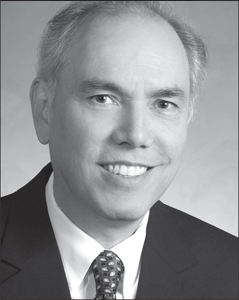Preparing for Climate Disasters

The United States knows how to respond to disasters. When calamity strikes, the Federal Emergency Management Agency swings into action, opens the national coffers, and leans on state governments to deliver relief supplies to affected communities. The execution occasionally falters, but the playbook is familiar and, by and large, sound.
The dramatic increase in the frequency and severity of natural disasters, however, requires writing a new chapter in the playbook. Climate change has converted what were formerly 100-year and 500-year storms and floods into common events, triggering fiscally irresponsible repeat spending on disaster after disaster. The United States is beginning to acknowledge this new reality and chart a path toward more deliberate preparation for climate events by engaging in pre-disaster planning, and investing in resilient infrastructure that can adsorb big hits — saving money, life, and limb in the process.
Congress has recognized that fiscal prudence demands this result. With studies showing that every dollar spent on hazard mitigation saves six dollars in future disaster costs, Congress has quietly been accompanying billion-dollar post-disaster relief appropriations with more limited (but not insignificant) pre-disaster mitigation funding. Then, in a breakthrough Congress in 2018 enacted the Disaster Recovery Reform Act, which anticipates that FEMA will set aside up to six percent of all money appropriated to disaster relief to support investments in pre-disaster planning and infrastructure. This new program, called Building Resilient Infrastructure and Communities, appropriately known as BRIC, is just gearing up now. When fully launched, the program will direct billions of dollars toward making our communities more resilient and more capable of responding to disastrous storms and floods.
While this new program is necessary and appropriate, the United States is not set up to maximize its beneficial impact. Unless it provides much more significant planning and execution assistance than is now available, FEMA could transfer billions in ill-conceived hazard mitigation grants to states, tribes, local communities, and territories, representing a massive lost opportunity.
The incoming Biden administration must not allow this to happen. We know what can go wrong. FEMA and other first responders who are expert in implementing post-disaster efforts are not as skilled in identifying and evaluating long-term resilience solutions. Too often, pre-disaster hazard mitigation money flows to familiar, off-the-shelf engineered projects — whether they represent the best long-term solutions or not. Traditional economic tools ignore or under count ecosystem benefits, community preferences, and other less easily monetized benefits. And frontline communities that face disproportionate risks from disaster events may not even be consulted and, if they are, have limited resources or capacity to participate in the decisionmaking process.
Unless addressed, these shortcomings will haunt FEMA’s new program. Without an organized repository of information on existing threats and emerging best practices, a regularized structure that solicits and evaluates promising investment alternatives, and systematic follow-up that tests and records whether resilience projects provide promised benefits, billion-dollar mistakes will continue to be made.
For vulnerable coastal areas, these missing programmatic elements mean that gray infrastructure projects like sea walls and other armoring techniques will continue to scarf up a disproportionate share of resilience spending. FEMA already has demonstrated its propensity to be stuck in the do-loop of rebuilding communities in flood zones again and again — particularly after the Trump administration rescinded the Federal Flood Risk Management Standards that would have required communities to consider future flood risk when rebuilding.
This article reviews these issues and offers recommendations for how to maximize the effective disbursement of the billions that FEMA and other federal agencies will be spending to improve the resilience of vulnerable coastal resources and infrastructure. We focus on investments in coastal infrastructure because we know that under its new BRIC program, FEMA will be providing large pre-disaster mitigation grants to states that are being hammered by sea-level rise and climate-infused mega storms. Also, in the aftermath of recent hurricanes and the Deepwater Horizon oil spill, a large number of coastal resilience projects already are underway along the Eastern Seaboard and in the Gulf of Mexico, providing a rich source of new data and experiential learning that can and should inform the future direction of FEMA’s new grant program and other pre-disaster resilience spending.
After Hurricane Sandy, for example, the Department of Housing and Urban Development led the innovative National Disaster Resilience and Rebuild by Design competitions, while the Department of the Interior and Fish and Wildlife Service invested more than $300 million in coastal resilience projects across the Northeast and Mid-Atlantic. Likewise, after Hurricane Harvey, Congress provided over $28 billion to HUD to support recovery in lower-income communities, and set aside $12 billion to help these neighborhoods mitigate risks from future disasters. The National Oceanic and Atmospheric Administration has ramped up its National Oceans and Coastal Security Fund to invest in myriad restoration projects following other hurricane disasters. And the Deepwater Horizon oil spill disaster spawned settlements that have allocated a jaw-dropping $16 billion toward coastal and ocean-related environmental and economic restoration activities in the gulf.
Although our focus is on coastal investments, the principles identified in our article have equal bearing in other disaster-prone contexts, including wildfires, inland flooding, tornados, and other extreme weather events made more common by climate change.
The year 2020 was a record-breaking period of natural disasters, closing out two decades in which the United States has seen hundreds of billions in economic losses and thousands of fatalities. Warmer coastal waters and rising seas are increasing the intensity of weather events, driving storm surges further inland, and unleashing biblical-scale rain events in communities like Houston. And these disasters are disproportionately affecting low-income neighborhoods and communities of color. Economic inequality, lack of investment, and proximity to pollution all exacerbate threats from climate-related disasters, which was demonstrated this year with deadly consequence as a triad of storms successively hit Southwest Louisiana — a region that is already overburdened with pollution due to its prevalence of heavy industry. Scientists predict that more devastation is in store as the planet continues to warm, estimating that without action the United States stands to lose nine percent of its GDP by 2060 — equal to the economic losses recorded during the COVID-19 pandemic, but repeated year after year.
These statistics expose the need for new approaches to how communities recover from and rebuild after disasters. We know that because of the impetus to quickly “get things back to normal,” federal funders and grantees make numerous mistakes, including often turning to outdated, environmentally harmful approaches to protect coastal communities and resources — like rebuilding in harm’s way and relying heavily on gray infrastructure such as levees and sea walls.
The challenge and opportunity provided by the upcoming flood of federal dollars toward pre-disaster hazard mitigation activities calls for a much more systematic and disciplined approach. FEMA and other federal funders should be pushing states and other governmental entities to engage in planning so they can effectively deploy resilience dollars as soon as they become available. They also should be encouraging their grantees to adopt a variety of additional reforms, including increased use of nature-based resilience strategies. Another measure is the development of metrics to measure and verify the effectiveness of resilience projects. They need to provide a clearinghouse and mapping services to help grantees understand their vulnerabilities and learn from the experience of others, while ensuring that all communities — especially disadvantaged ones — have a strong voice in deciding how hazard mitigation dollars are spent. Finally, agencies need to expand private-sector support for these strategies.
It is intuitively obvious that states that have thought ahead and developed sound plans to protect coastal resources will be better positioned to take advantage of FEMA’s BRIC grants and other funding opportunities. Experience backs up this supposition. Louisiana, for example, has developed a comprehensive Coastal Master Plan that provides a science-based frame for directing investments. The plan includes innovative nature-based strategies for enhancing coastal ecosystems and reducing flood and sea-level rise risks.
Louisiana has turned to its CMP to effectively direct funding to well-planned projects, including multiple million-dollar resilience projects that are being funded from the Deepwater Horizon oil spill settlement. For example, Louisiana is building sediment diversions that will redirect silt and sand being carried down the Mississippi River to rebuild protective marshes in areas like the Barataria Bay and Breton Sound. Other gulf states that did not have mature state plans in place had to scramble to come up with appropriate projects for Deepwater Horizon settlement funds.
Although states and local governments must develop hazard mitigation plans to receive FEMA funding, they should be encouraged to develop more comprehensive climate resilience plans — and governments with such plans should be prioritized for federal funding. Federal agencies should also provide technical assistance and guidance to help states and communities develop robust plans and design resilience projects that can be implemented quickly in the aftermath of a disaster. Such plans should consider future climate risks and identify strategies for building long-term resilience. Plans also should consider risks to both the natural and built environments and identify ways of preserving and restoring natural assets as a means of reducing risks and enhancing resilience for both people and wildlife. Needless to say, states with robust resilience plans will be better able to quickly deploy scarce resources and deliver more cost-effective projects that generate multiple benefits for vulnerable communities.
The Obama administration’s launch of a $1 billion National Disaster Resilience Competition after Hurricane Sandy provides evidence that supporting state planning and project design efforts can pay dividends. The Rockefeller Foundation brought in a range of experts who trained and helped state and local applicants develop innovative resilience projects that addressed multiple community challenges. In New Orleans, for example, the city is reintegrating nature, using green infrastructure approaches to improve stormwater management, reduce flooding, and create recreational amenities in underserved neighborhoods.
States should be encouraged to leverage other funding sources and take regulatory and incentive-based approaches to complement federal investments. FEMA and other federal agencies should consider using the carrot of federal funding to incentivize state and local governments to adopt proactive approaches. Some states already are putting in place new programs that consolidate disparate funding sources and operational capabilities to focus on resilience priorities. For example, South Carolina recently passed legislation to create an Office of Resilience to coordinate planning activities, and a Resilience Revolving Fund that will combine state and federal resources and support investments in floodplain buyouts and restoration efforts that reduce flood risks in communities. FEMA should use its BRIC program to reward states that put some of their own skin in the important resilience game.
Another important step is to advance nature-based approaches. FEMA and other federal agencies making coastal resilience grants should insist that states propose the deployment of natural infrastructure projects in concert with, or as an alternative to, gray infrastructure. The federal government should explicitly acknowledge and credit the additional benefits that typically accompany such nature-based solutions. By signaling its preference, the feds will encourage states to take such projects seriously.
To achieve this end, we need to remove outdated federal rules that present roadblocks to natural infrastructure approaches. Although FEMA recently changed its policy to allow for the inclusion of ecosystem service benefits in required benefit-cost analyses — with the specific goal of “allow[ing] for easier inclusion of nature-based solutions into risk-based mitigation projects” — that is easier said than done. Ecosystem service benefits are notoriously difficult to monetize. Modelling that is out-of-reach for most applicants is often needed to demonstrate the risk reduction benefits of nature-based projects. Even then, without more aggressive retooling of benefit-cost expectations and discount rates, federal agencies are likely to continue to overvalue the benefits of environmentally harmful short-term solutions like shoreline armoring while not fully accounting for the environmental and social benefits delivered by natural solutions.
One way to address this problem is for FEMA and other federal agencies to fund demonstration projects that test the efficacy of these approaches while providing case examples of monetized ecosystem service benefits, meanwhile overhauling benefit-cost rules that present roadblocks. For example, FEMA could set aside a significant percentage of its mitigation funds for natural infrastructure projects, similar to the green project reserve that requires 20 percent of water infrastructure funding for green stormwater management approaches. This would help demonstrate the effectiveness of these nature-based approaches for reducing flood risks, and also build capacities at all levels of government to design and implement natural infrastructure projects.
When tens of millions are being invested in improving coastal resilience from climate and other impacts, federal funders and local communities alike need to know that taxpayer dollars are being spent wisely. Accordingly, it is important to identify and estimate the social, economic, and environmental benefits that may be associated with various coastal resilience strategies and then to evaluate, over time, whether projects are delivering the expected benefits.
As noted above, this exercise can require the development of sophisticated methodologies that credit the “natural capital” benefits that may accrue from nature-based coastal solutions (such as improved water quality, fishery and avian benefits, blue carbon, etc.), as well as social and economic benefits that may be tied into community preferences and job opportunities. With the assistance of federal scientists, NGOs, academic centers, and grantees, FEMA and other federal agencies need to develop methodologies and metrics that can be used to measure and verify the full range of potential project benefits.
Significant attention also needs to be paid to monitoring project performance. FEMA’s soon-to-be well-funded BRIC program is well-positioned to provide money for the deployment of monitoring protocols for resilience projects. Other federal authorities engaged in approving resilience projects, like HUD, Interior, and NOAA, need to be doing the same. Monitoring data and adaptative management experience must then be made available for agencies at all levels to identify gaps, learn from experience, inform investment and reforms, and establish best practices that can be scaled and replicated.
While the federal government should not use its funding leverage to dictate state decisionmaking, the feds can, and should, use their unique vantage to disseminate information about successes and failures of resilience planning and execution practices all around the United States. This will help planners identify best practices and benchmark their projects.
The federal government can contribute this valuable service by building upon approaches like the U.S. Climate Resilience Toolkit and NOAA’s Digital Coast. The concept would be creating a comprehensive adaptation clearinghouse that catalogues and provides benefit-cost and performance data regarding hundreds of coastal protection (and other climate-related) resilience projects. Such a clearinghouse would include detailed information about projects in an accessible format that would enable users to efficiently gather and test out ideas that have been tried in different jurisdictions. Such a clearinghouse also would facilitate direct contacts with state sponsors and project managers, obviating the frustrating sense that jurisdictions are being left to invent the wheel on their own.
As a helpful step for affected agencies and communities, the feds should augment a climate adaptation clearinghouse with a centralized GIS-based mapping service that pulls together data so that states and other interested governments and individuals can evaluate the vulnerability of their communities as well as explore resources in their regions that can reduce climate-related impacts.
In doing mitigation right, it is vital that communities have a voice in decisionmaking. Failures to meaningfully engage with neighborhoods regarding pre-disaster planning and post-disaster responses have led to disparities in recovery outcomes for low-income communities and communities of color. Research has shown that communities of color often never fully rebound after experiencing impacts from extreme weather and are often left worse off than their White neighbors, who have an easier time accessing aid and receive higher disaster payments.
FEMA and other federal agencies involved in funding hazard mitigation planning have a responsibility to provide the resources that communities need to fully consider socioeconomic vulnerabilities and to direct investments to frontline communities that face the greatest threats from climate impacts. To ensure that marginalized communities have a voice in decisionmaking, agencies should provide sustained funding for community-based organizations that can lead planning processes and support meaningful engagement between government decisionmakers and residents.
Louisiana’s Strategic Adaptations for Future Environments initiative provides an example of this type of effort. LA-SAFE is implementing a range of innovative coastal resilience projects that were selected after an extensive, year-long community engagement process that was co-designed and directed by residents of six coastal parishes that were hard hit by Hurricane Isaac in 2012. These community-driven projects were only made possible because of significant funding from HUD and the support of regional philanthropy and academic and nonprofit partners.
Thus, FEMA’s BRIC program and other federal sponsors should provide funding that will enable underserved communities to participate fully in hazard mitigation planning and implementation activities. More generally, Congress should consider increasing the federal cost share for mitigation and resilience investments in economically underserved communities to ensure that resources are being directed to the most at-risk communities. Economically distressed and tribal communities often struggle to raise the needed match, which limits their ability to leverage federal funds to support important investments. While FEMA mitigation programs offer a 90 percent federal cost share for smaller rural communities, larger economically distressed communities still must raise a 25 percent match. Congress should extend more favorable federal cost share to economically disadvantaged communities of any size.
Siloed decisionmaking at the federal level also is limiting the ability of states and communities to identify and implement holistic projects that comprehensively address community challenges. By helping to coordinate funding, permitting, and environmental reviews, federal agencies can support better projects on faster timelines.
Experience confirms that this can be done. After Hurricane Sandy, technical coordinating teams were established to improve coordination among federal agencies administering disaster relief funds and their state counterparts. These teams helped align funding to support a more comprehensive disaster recovery in affected communities. Teams also were established to coordinate permitting across federal agencies and to work with project leads to help them navigate rules and more quickly advance projects. A similar model is being employed in the San Francisco Bay region to coordinate state and federal permitting agencies and speed implementation of restoration and resilience projects that are being funded through Measure AA — a regional parcel tax that is generating $25 million annually to support investments in ecological restoration around the San Francisco Bay.
State and local governments cannot do this work alone. The private sector — including philanthropy, nonprofits, academia, and businesses — also have important roles to play in supporting and enhancing public-sector efforts to build climate resilience. The federal government should support and encourage the private sector to dedicate resources and talent to collective efforts to address the climate crisis.
The Rockefeller Foundation’s collaboration with HUD and its support for the National Disaster Resilience Competition is one model. Conservation land trusts — like Katy Prairie Conservancy in the Houston region — are also supporting flood resilience initiatives by acquiring flood-prone properties and restoring natural ecosystem functions. And nonprofits like Audubon are working with community-based partners to provide technical support and assistance to help neighborhoods design natural infrastructure that enhances climate resilience for both people and wildlife. For example, Audubon California is working with Shore Up Marin City — a multi-racial environmental coalition in a lower-income community in Marin County — to design and restore tidal wetlands that will reduce flood risks and also provide other environmental and recreational amenities in an underserved community. Federal programs should remove barriers to and create incentives for the private sector to support state and local resilience efforts in these ways.
With significant new resources flowing to efforts to reduce risks before disasters strike, the Biden administration has an important opportunity to ensure that state and local governments have the funding and capacities needed to create effective projects that will meet multiple community needs. By implementing the common-sense approaches above, the Biden administration can ensure that communities have the tools and resources needed to build a better future. TEF
LEAD FEATURE With new funding to reduce risks before calamity strikes, the Biden administration has an opportunity to ensure that state and local governments have the resources and capacities needed for effective mitigation projects that will meet multiple community needs.





